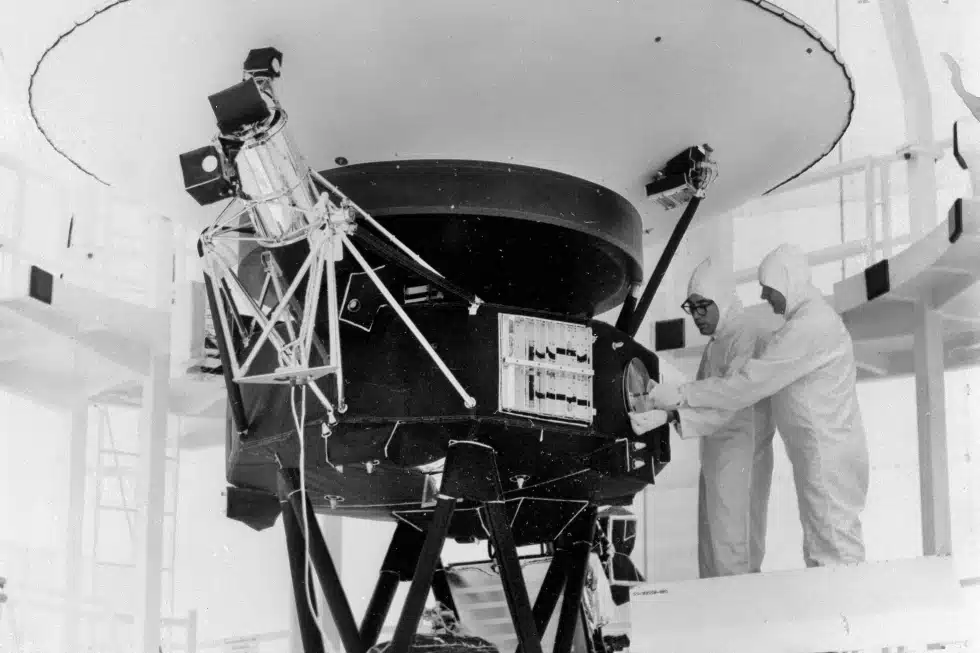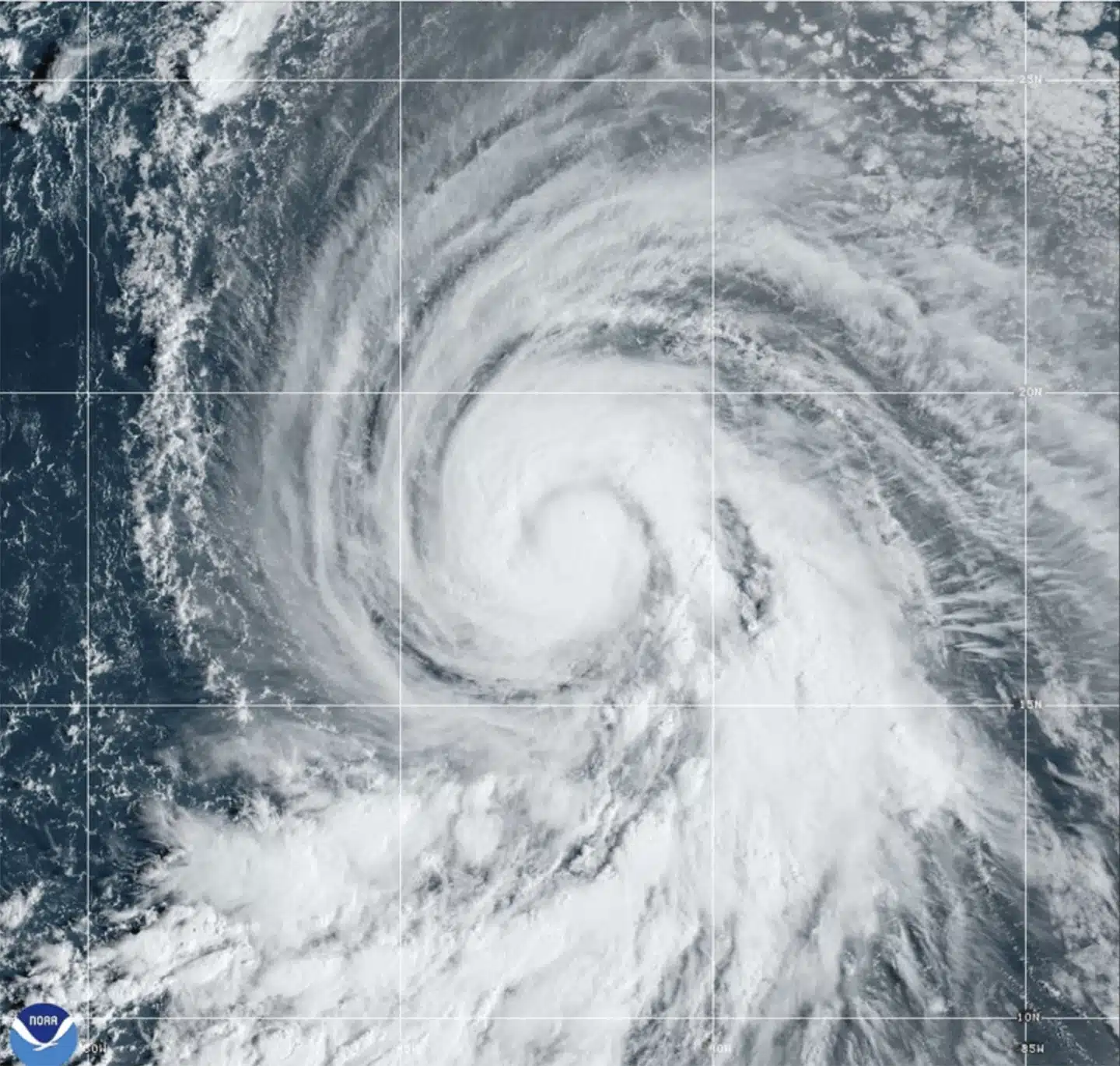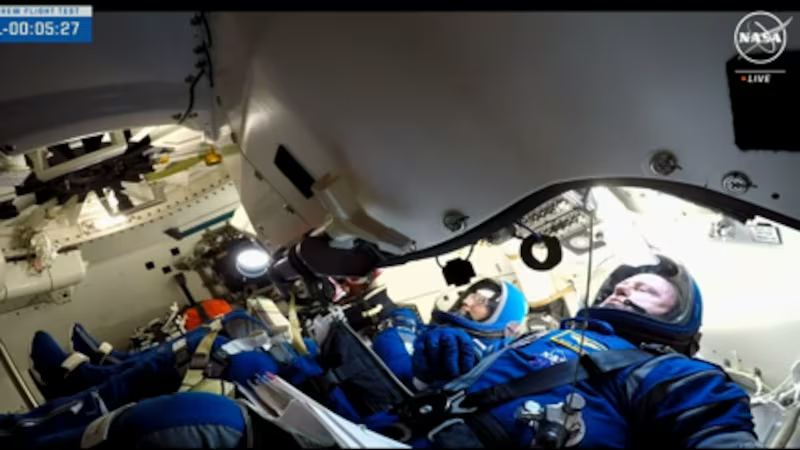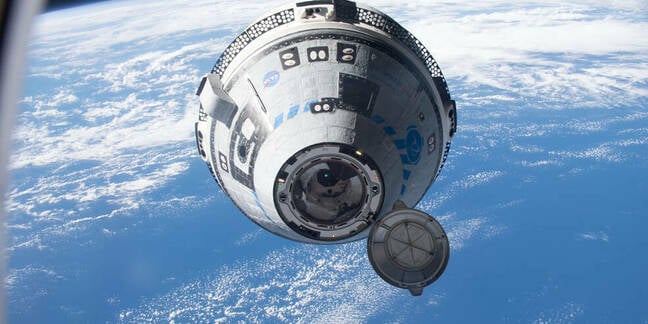Science
Two Year Old Thai Girl Cryogenically Preserved
BANGKOK – Two-year-old Matheryn Naovaratpong who died from a brain tumour has been cryogenically preserved in the hope she will one day be revived by advances in science.
Matheryn Naovaratpong, from Thailand, is thought to be the youngest person ever cryogenically preserved.
The toddler was diagnosed with an aggressive form of cancer last April after she failed to wake up one morning
After being admitted to a Bangkok hospital, tests revealed she had a 11cm tumour in the left side of her brain.

Matheryn Naovaratpong, from Thailand, is thought to be the youngest person ever cryogenically preserved
Doctors diagnosed her with ependymoblastoma, a rare form of brain cancer that afflicts the very young.
The outlook was bleak from the start – the disease has a five-year survival rate of 30 per cent.
To make matters worse, Matheryn – known to her family as Einz – had fallen into a coma.
After a months of intensive treatment, including 12 rounds of brain surgery, 20 chemotherapy treatments, and 20 radiation therapy sessions, it became clear there was little more doctors could do.
Tragically she died on January 8th this year after her parents switched off her life support machine.
By the time she passed away, she had lost 80 per cent of the left side of her brain – essentially paralysing the right side of her body.
But determined for some good to come from her death, her family have had her body cryogenically preserved – by one of the biggest providers of this service in the world.
Little Matheryn is currently at the Arizona-based Alcor, her brain and body frozen separately at 196C.
Her family’s main – although many would argue, far fetched – hope is that one day, science will have progressed enough to restore life to her.
Alternatively, her parents want the cells from her brain and other parts of her body to be saved, so the disease that killed her can be studied in the future.
Alcor is also where the bodies of famous baseball player Ted Williams, as well as his son John Henry Williams, are stored.
‘It [the freezing] provides the opportunity for Matheryn to breathe again when the technology is provided and appropriate for her disease,’ said her father, who found out about the cryopreservation firm on the internet.
But as a family of doctors, they are hopeful, rather than unrealistically optimistic.
And as Matheryn’s doctor pointed out: ‘Her life was made possible by modern science in the first place – she was carried by a surrogate because her mother had lost her uterus birthing a son.’
The family also feels there are ‘still considerable frontiers left to be examined when it comes to medicine and human physiology.
‘They didn’t want their daughter’s life to end in vain,’ Aaron Drake, Alcor’s medical response director told Motherboard.
‘They’re hoping that by preserving the tissue cells of this particular cancer, they can come up with a better treatment plan, and maybe even eventually cure it. If you look at the global picture of what they’re trying to accomplish, it’s very altruistic.’
But the process of cryogenically freezing the toddler wasn’t just an emotional rollercoaster, but a logistical one, too.
In an ideal world, she would have been flown to Arizona.
But Matheryn’s health was so poor and when she ended up on a ventilator, air travel became impossible.
Instead, a doctor from Alcor flew to Thailand and, as soon as she was pronounced dead – at 6.18pm on that January evening – preservation of her body began.
Matheryn’s family said it provides peace of mind and gives them some solace from the tragedy of her death.
‘At least, we devoted her life and body for the progress and development of science,’ said her mother, Nareerat.
‘This is also another treat for our family, we know that she’s alive although we have been separated.’
Here’s what you need to know about having a (very small) second chance at life:
1. How does it work?
There are two main stages to cryonic preservation. Moments or minutes after the heart stops, circulation needs to be maintained so that the brain avoids injury through the lack of oxygen and glucose.
Thereafter, blood and water in the body is replaced with cryoprotectants before being cooled. The cryoprotectants prevent the formation of ice crystals which can cause damage to cell membranes.
The process of deep cooling without freezing is known as vitrification.
2. How much does it cost?
The Arizona-based Alcor Life Extension Foundation charges US$80,000 to preserve the brain and about US$200,000 to keep the whole body in storage.
Quite a bit of the cost goes into the procedures and chemicals required for cryopreservation, but US$115,000 goes into a “patient care trust fund”. The funds are managed by the Patient Trust board.
The projected returns from the money is meant to cater for the customer’s eventual return, Dr Max More, Alcor’s CEO, has said in an interview with online magazine Motherboard.
The Cryonics Institute, also based in the US, says its minimum fee is US$28,000.
KrioRus, a Russian outfit, charges US$36,000 for full body preservation and US$12,000 for preserving the head, according to its website.
A common way of paying for it is through the payout from a life insurance policy.
3. How uncommon is the procedure?
The first person to be cryogenically frozen was 73-year-old psychologist James Bedford, who was suspended in 1967.
Alcor, one of the world’s largest cryonic companies, froze its first “patient” in 1976 and Matheryn was their 134th customer. There are more than 1,000 people who have signed up to be preserved by the company when they die.
The Cryonics Institute, started by math professor Robert Ettinger, has 130 “patients” currently. Dr Ettinger, who died in 2011 at age 92, was patient 106. According to its website, there are also 110 pets preserved at the Michigan facility.
Their members – living individuals who have signed up to be preserved – numbered 1,180 in March this year. There are two members from Singapore, while the majority are from the US.
The South China Morning Post reported last September that Alcor may be setting up a team in China as interest in Asia grows.
4. Is a person in “suspension” dead?
Death is not a clear-cut boundary for cryonicists and as medical technology advances, it has become an increasingly blurred line for doctors.
Alcor claims that while their patients are legally dead, they can be kept “biologically alive” with the cryonic process.
After a person’s heart stops and blood stops circulating, other parts of the body lose function when deprived of oxygen and glucose.
The brain is one of the first to sustain damage, and it can survive for up to about six minutes after the heart stops. Detached limbs can be re-attached hours or even days without blood circulation if refrigerated.
Legally, the preserved “patients” in cryonic facilities are seen as organ donations and tissue samples, but Alcor views them as “potential persons”.
Cryobiologist Dr Dayong Gao from the University of Washington, Seattle, told the BBC: “We simply don’t know if they’ve been damaged to the point where they’ve ‘died’ during vitrification because the subjects are now inside liquid nitrogen canisters.”
5. How can one bring a body back to life?
Simple tissues, small insects and embryos have been successfully preserved and brought back to life.
A rabbit kidney was vitrified and successfully transplanted in 2002, but in general, the deep-freezing of organs, much less whole mammals, is not feasible yet.
There are numerous obstacles that have to be overcome before attempting to bring back cryonically preserved persons.
Firstly, the knowledge and technology to reverse old age or cure the diseases they suffered prior to death will have to be in place.
The supercooling process is likely to have damaged their bodies. Many cryoprotectants are toxic, and their effects on the human body are unclear.
Cooling a body to -196 deg C can also make it extremely brittle, and prone to fracture.
Proponents of cryonics pin their hopes on scientific breakthroughs such as nanotechnology (the manipulation of matter at a molecular level) to repair the bodies of those preserved, or re-generate bodies for preserved brains.
Sources: Motherboard, How Stuff Works, Alcor Life Extension Foundation, BBC

Science
NASA Switches Off Instrument On Voyager 2 Spacecraft To Save Power

NEW YORK — To save power, NASA turned off another scientific equipment on its long-running Voyager 2 spacecraft.
NASA Switches Off Instrument On the Spacecraft To Save Power
The space agency announced on Tuesday that 2’s plasma science instrument, meant to study the movement of charged atoms, was turned off in late September to allow the spacecraft to continue exploring for as long as possible, which is estimated to be into the 2030s.
NASA turned off a suite of instruments on Voyager 2 and its twin, Voyager 1, after exploring the gas giant planets in the 1980s. Both are currently in interstellar space or the region between stars. The plasma instrument on Voyager 1 stopped working years ago and was finally shut off in 2007.
The remaining four instruments on 2 will continue to collect data on magnetic fields and particles. Its mission is to investigate the regions of space beyond the sun’s protective sphere.
NASA Switches Off Instrument On Voyager 2 Spacecraft To Save Power
It launched in 1977, is the only spacecraft to have visited Uranus and Neptune. It is now more than 12 billion miles (19.31 billion kilometers) from Earth. 1 is more than 15 billion miles (24.14 billion kilometers) beyond Earth.
SOURCE | AP
Science
Hurricane Kirk Could Cause Dangerous Surf Conditions Along The US East Coast

MIAMI — Hurricane Kirk’s waves could generate life-threatening surf and rip current conditions this weekend throughout the United States East Coast, as well as in Bermuda, the Greater Antilles, and the Bahamas, according to forecasters.
Kirk was a Category 3 hurricane in the middle Atlantic Ocean that might grow further but was predicted to stay away from land, according to the Miami-based National Hurricane Center on Thursday.
Hurricane Kirk Could Cause Dangerous Surf Conditions Along The US East Coast
Kirk-generated swells were forecast to reach parts of the Leeward Islands on Friday, Bermuda and the Greater Antilles on Saturday, and the East Coast and the Bahamas on Sunday, according to the center.
No coastal watches or warnings were in effect. The major storm was around 1,130 miles (1,820 kilometers) east of the Leeward Islands, with maximum sustained winds of 125 mph (205 km/h).
Meanwhile, Tropical Storm Leslie formed late Wednesday in the eastern Atlantic and is expected to strengthen into a hurricane in the following days, forecasters said. It was also not considered a threat to the land.
Hurricane Kirk Could Cause Dangerous Surf Conditions Along The US East Coast
The storm was about 540 miles (870 kilometers) southwest of Cabo Verde’s southernmost tip, with maximum sustained winds of 45 mph (75 kph), according to the center.
The storms raged in the Atlantic as rescuers in the United States Southeast sought for missing persons after Hurricane Helene struck last week, leaving a trail of death and devastation.
SOURCE | AP
Science
NASA Sends First Manned Starliner Spacecraft to Space Station

NASA has announced astronauts Butch Wilmore and Suni Williams are safely in orbit on the first crewed flight test of Boeing’s Starliner spacecraft heading for the International Space Station.
As part of NASA’s Boeing Crew Flight Test, the astronauts launched a ULA (United Launch Alliance) Atlas V rocket from Space Launch Complex-41 at Cape Canaveral Space Force Station in Florida at 10:52 a.m. EDT Wednesday for an end-to-end test of the Starliner system.
“Two brave NASA astronauts are well on their way to this historic first test flight of a brand-new spacecraft,” stated NASA Administrator Bill Nelson. “Boeing’s Starliner represents a new era of American exploration. Human spaceflight is a risky endeavor, but it is worth it. It is an exciting time for NASA, our commercial partners, and the future of space exploration. “Go Starliner, Butch, and Suni!”
The flight test is part of NASA’s Commercial Crew Program and will help validate the transportation system, launch pad, rocket, spacecraft, in-orbit operations capabilities, and return to Earth with astronauts aboard as the agency prepares to certify Starliner for rotational missions to the space station. Starliner has already completed two uncrewed orbital missions, including a test to and from the space station, as well as a pad abort demonstration.

Boeing Starliner Makes Orbit
“With Starliner’s launch, separation from the rocket, and arrival in orbit, Boeing’s Crew Flight Test is right on track,” said Mark Nappi, vice president and program manager for Boeing’s Commercial Crew Program. “Everyone is focused on giving Suni and Butch a safe, comfortable, ride and performing a successful test mission from start to finish.”
Boeing’s mission control center in Houston will supervise a sequence of autonomous spacecraft maneuvers while Starliner is in flight. NASA teams will supervise space station activities from the Mission Control Center at the agency’s Johnson Space Center in Houston.
“Flying crew on Starliner represents over a decade of work by the Commercial Crew Program and our partners at Boeing and ULA,” said Steve Stich, Commercial Crew Program Manager at NASA’s Johnson Space Center in Houston. “For many of us, this is a career-defining occasion, ushering in a new crew transportation capacity for our agency and our country. We will take it one step at a time, putting Starliner through its paces and remaining watchful until Butch and Suni safely land back on Earth at the end of this test journey.”
At about 12:15 p.m., Starliner will dock autonomously to the forward-facing port of the station’s Harmony module. Thursday, June 6, and will remain at the orbital laboratory for almost a week.
Wilmore and Williams will help ensure that the spacecraft is functioning properly by testing the environmental control system, the displays and control system, and moving the thrusters, among other things, during flight.
Wilmore and Williams will join the Expedition 71 crew, which includes NASA astronauts Michael Barratt, Matt Dominick, Tracy C. Dyson, and Jeanette Epps, as well as Roscosmos cosmonauts Nikolai Chub, Alexander Grebenkin, and Oleg Kononenko.
NASA’s arrival and in-flight event coverage is as follows (all times Eastern and subject to change depending on real-time operations):
NASA Television channels will continue to broadcast the Starliner’s mission.
Thursday, June 6
9:30 a.m. – Arrival coverage begins on NASA+, the NASA app, and YouTube, and continues on NASA Television and the agency’s website.
12:15 p.m. – Targeted docking
2 p.m. – Hatch opening
2:20 p.m. – Welcome remarks
3:30 p.m. – Post-docking news conference at NASA Johnson with the following participants:
- NASA Associate Administrator Jim Free
- Steve Stich, manager, NASA’s Commercial Crew Program
- Jeff Arend, manager for systems engineering and integration, NASA’s International Space Station Office
- Mark Nappi, vice president and program manager, Commercial Crew Program, Boeing
Coverage of the post-docking news conference will air live on NASA+, NASA Television, the NASA app, YouTube, and the agency’s website.
To attend the post-docking briefing, U.S. media must contact the NASA Johnson newsroom at: [email protected] or 281-483-5111 by 1 p.m. Thursday, June 6. To join by phone, media must contact the NASA Johnson newsroom by 3 p.m. Thursday, June 6.
5:50 p.m. – NASA Administrator Bill Nelson, Deputy Administrator Pam Melroy, Associate Administrator Jim Free, Associate Administrator for Space Operations Ken Bowersox, and Johnson Space Center Director Vanessa Wyche will speak with Wilmore and Williams about their launch aboard the Starliner spacecraft.
Coverage of the Earth to space call will air live on NASA+, NASA Television, the NASA app, YouTube, and the agency’s website.
Saturday, June 8
8:50 a.m. – NASA astronauts Wilmore and Williams will provide a tour of Starliner.
Coverage of the in-orbit event will stream live on NASA+, NASA Television, the NASA app, YouTube, and the agency’s website.
Monday, June 10
11 a.m. – Williams will speak to students from Sunita L. Williams Elementary School in Needham, Massachusetts, in an event aboard the space station.
Coverage of the Earth to space call will air live on NASA+, NASA Television, the NASA app, YouTube, and the agency’s website.
Tuesday, June 11
3:15 p.m. – Wilmore will speak to students from Tennessee Tech University in an event aboard the space station.
Coverage of the Earth to space call will air live on NASA+, NASA Television, the NASA app, YouTube, and the agency’s website.
-

 News3 years ago
News3 years agoLet’s Know About Ultra High Net Worth Individual
-
Entertainment2 years ago
Mabelle Prior: The Voice of Hope, Resilience, and Diversity Inspiring Generations
-

 Health4 years ago
Health4 years agoHow Much Ivermectin Should You Take?
-

 Tech2 years ago
Tech2 years agoTop Forex Brokers of 2023: Reviews and Analysis for Successful Trading
-

 Lifestyles3 years ago
Lifestyles3 years agoAries Soulmate Signs
-

 Movies2 years ago
Movies2 years agoWhat Should I Do If Disney Plus Keeps Logging Me Out of TV?
-

 Health3 years ago
Health3 years agoCan I Buy Ivermectin Without A Prescription in the USA?
-

 Learning3 years ago
Learning3 years agoVirtual Numbers: What Are They For?


